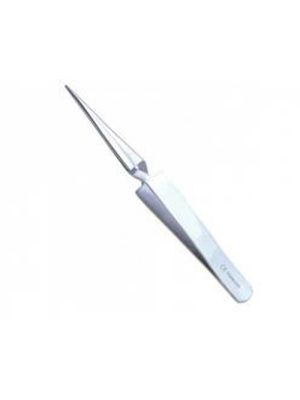Leaning Tower of Pisa
Scale: 1/160
Skill Level: medium
Size (LxWxH): 200x200x370 mm (7x7x14 inch)
Who doesn't know about the Leaning Tower in Italy. With this lovingly made model from Schreiber you can get this icon into your living room!
The leaning tower belongs to an ensemble that makes up the cathedral complex in the Tuscan town of Pisa: the cathedral, the tower, the baptistery and the cemetery. In 1987 the ensemble was declared a World Cultural Heritage Site by the UNESCO. The tower itself was designed as the bell tower for the cathedral. With its round shape, rows of columns on all storeys and its originally planned height of 100 metres, it was meant to distinguish itself clearly from other towers in Italy and therefore demonstrate the wealth and the power of the medieval city-state of Pisa. According to the legend, Galileo Galilei conducted studies on the tower concerning the law of falling bodies.
When the construction of the building began in 1173 there were considerable complications. After the third storey had been completed, the foundations subsided. The building began to lean. The construction work had to be stopped. It was only 100 years later that work on the tower continued and the remaining storeys were put onto the tower slanting so as to compensate for the tilt. However, the foundations subsided once again. Because of further interruptions, the building was only completed 200 years after the start of construction. It was too risky to construct the tower to the height originally planned. It is only about 54 metres high. As building material, 14,200 tons of white marble were used.
The tower has bells at the top, but it was not always allowed to ring them because of the danger of collapse. There are various statements regarding the angle of inclination. When it became too dangerous to visit the tower because of its inclination, the City of Pisa had to close its landmark to visitors in January 1990.
Extensive renovation work during its closure prevented its possible collapse. In May 1992 steel bands were built into the second storey. In addition, in July 1993, 600 tons of lead were added to the foundations on the north side as a counterbalance. In that way the slant was reduced by 1 cm. Through ground freezing and steel cable bracing in 1995 the inclination increased again somewhat. As a consequence, the north side was weighed down with 900 tons of lead. In autumn 1997 there was a severe earthquake in the region. In order to prevent damage through further earthquakes, in 1998 the so-called ground extraction method was begun: by drilling holes in the ground on the north side, 50 cubic metres of material were removed. The foundations subsided and the tower straightened. In that way, up to its re-opening in December 2001, a step-by-step straightening by 44 cm was achieved. Apparently, the tower has been declared stable for the next 300 years.
During the renovations archaeologists found an old Roman road and a medieval grave with a perfectly preserved skeleton. The latest excavations prove that the tower stands at the edge of an ancient silted-up harbour basin. That is most probably one of the reasons for the settling of the foundations. During restoration work on the façade of the tower more than 24,000 marble blocks were cleaned from the dirt of air pollution, pigeon droppings and graffiti, and ornamentation was restored.
The closure of the tower had led to protests in the whole of Tuscany, as it was feared that there would be a huge drop in the number of tourists. However, the tower still remained a magnet for visitors even during the twelve-year renovation phase. The tourists were mainly interested in the inclination of the tower. The Romanesque architecture and the Byzantine influence in the design play only a minor role to most tourists. The Leaning Tower is an important economic factor for the City of Pisa. One can often hear it said: “The Tower has to lean, but it mustn’t fall.“
Angaben zur Produktsicherheit
Hersteller / Manufacturer:
Aue-Verlag GmbH, Korber Str. 20, D-74219 Möckmühl
Kontakt: https://www.schreiber-bogen.de/
| Product type | Papermodel |
|---|---|
| Manufacturer | Schreiber Bogen |
| Scale | 1/160 |
| Designer | Tabernacky, Przemyslaw |
| Difficulty | medium |
| Sheet size | 220 x 310 mm |
| Sheets | 11 |
| Parts | 230 |
| Length | 200 mm (7.87 inch) |
| Width | 200 mm (7.87 inch) |
| Height | 370 mm (14.57 inch) |
| Bauanleitung | German, English, Pictures |


 Deutsch
Deutsch





















